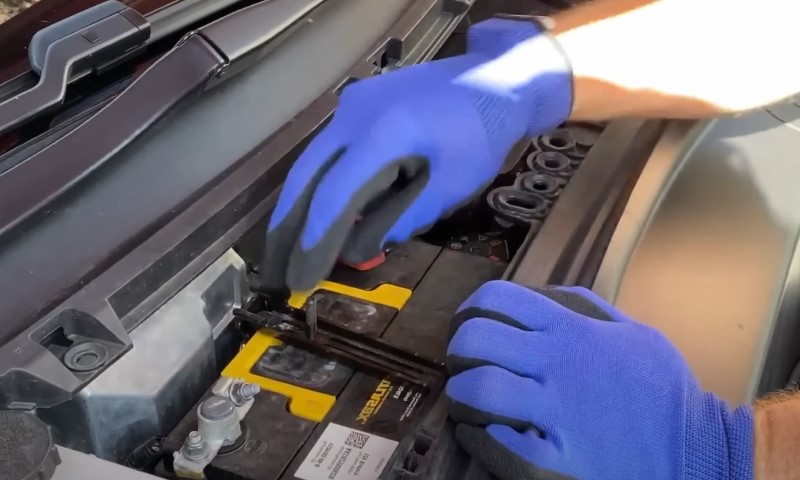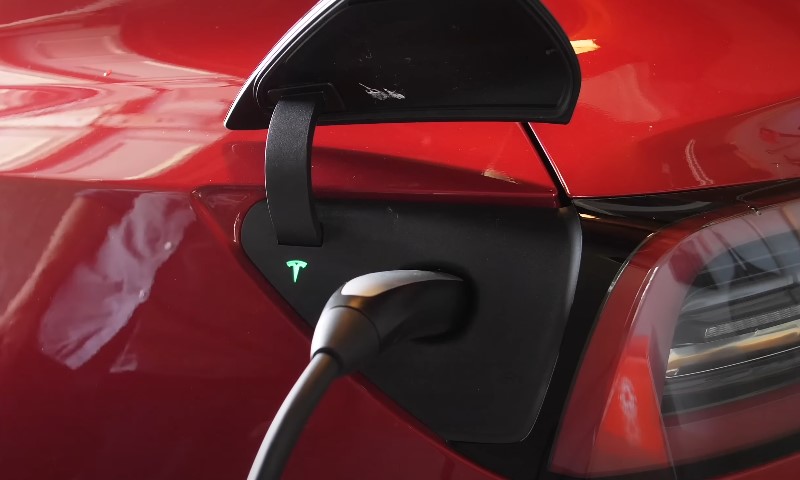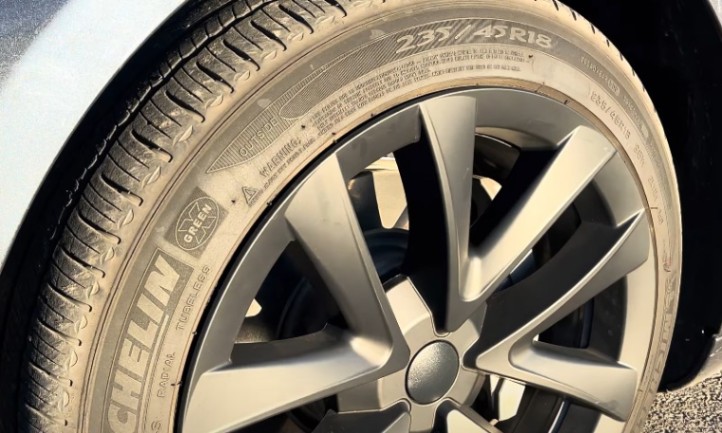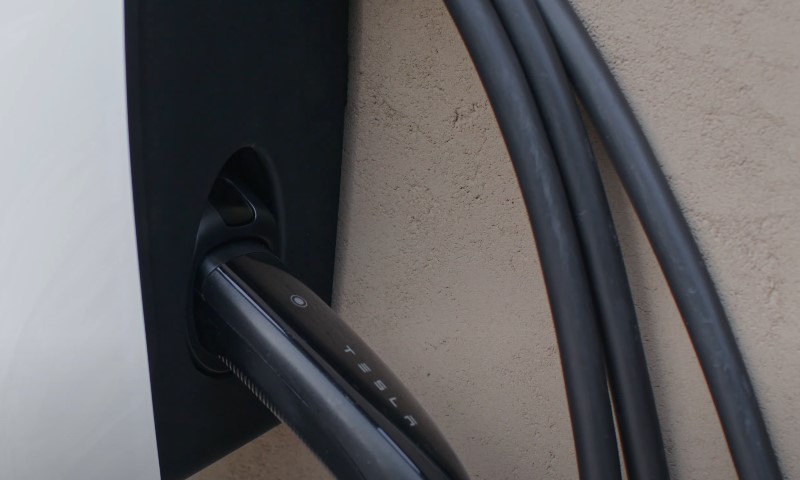Buying a Tesla is like joining a long-term experiment in modern mobility. You’re trading oil changes for software updates, gas pumps for charging cables, and sometimes, predictable costs for a few surprises.
The sticker price is only part of the story. What matters is how much you actually spend after five years of ownership.
Let’s take a look at where the money goes, what the averages look like in 2025, and how the numbers stack up for the two most common models: the Tesla Model 3 and Model Y.
Key Points
- A Tesla Model 3 costs about $50K over five years, while a Model Y runs closer to $58K–$60K total.
- Depreciation and insurance make up the biggest long-term expenses.
- Energy and maintenance costs stay relatively low if you charge mostly at home and care for your tires.
- Federal tax credits and smart charging habits can trim thousands off total ownership costs.
What “Total Cost” Really Includes

The total cost of owning a Tesla over five years involves a mix of known and shifting expenses. A realistic estimate includes:
- Depreciation and resale value
- Energy costs (home and public charging)
- Insurance
- Maintenance, tires, and wear items
- Repairs outside warranty
- Software and connectivity subscriptions
- Home charging setup
- Taxes, fees, and incentives
Each of those pieces adds up differently depending on how and where you drive. Let’s unpack them one by one.
Depreciation
Depreciation often makes up the biggest share of ownership cost, especially with EVs. Data from iSeeCars (2025) shows that electric vehicles lose value faster than gas cars: an average of about 58.8% after five years. For Teslas specifically:
| Model | 5-Year Depreciation | Approximate Resale Value (2025 Baseline) |
| Model 3 | 57% | 43% of original price |
| Model Y | 60.8% | 39.2% of original price |
That means a $43,000 Model 3 will likely be worth around $18,500 after five years, and a $50,000 Model Y could sell for about $19,600.
Depreciation is market-sensitive. It can swing with tax incentives, new model refreshes, or EV resale demand. If you buy lightly used and hold the car longer, you can dramatically soften that loss.
Energy

Electricity replaces gas, but it’s not free. The real question is how much you’ll spend to power a Tesla each year, and it’s less than most expect.
Average Efficiency and Cost
According to EIA :
| Model | Efficiency (kWh/100 mi) | Cost per kWh (avg. U.S. July 2025) | Cost per 12,000 mi/year |
| Model 3 | 25 | $0.1747 | ≈ $524 |
| Model Y | 28 | $0.1747 | ≈ $587 |
Those figures assume home charging , which accounts for about 80% of typical Tesla charging use. The other 20%: road trips, Supercharging, or public DC fast charging, costs more.
For a more realistic estimate, add about $150–$170 per year for public charging sessions.
So, annual electricity costs roughly land around:
- $674/year for Model 3
- $757/year for Model Y
Over five years, that’s $3,370 and $3,785 respectively.
Tip: Charging overnight during off-peak hours can slash that cost by 30% or more, depending on your utility’s time-of-use pricing.
Insurance
Tesla insurance costs tend to run higher than average, largely due to repair complexity and parts pricing.
The company’s integrated design means even small bodywork often requires Tesla-certified service centers, which drives up rates.
According to Bankrate :
- Model 3: around $3,400–$3,500/year
- Model Y: typically $3,000–$3,600/year
Expect significant variation by state and driver profile. For instance, a 40-year-old driver with a clean record in Texas might see $2,900, while the same driver in California could pay closer to $4,000.
Always get VIN-specific quotes before purchase. Tesla’s own in-house insurance is available in certain states and can sometimes undercut major carriers, though it’s worth comparing both options.
Maintenance and Wear

Electric vehicles avoid oil changes and transmission service, but they’re not maintenance-free.
Tires wear faster due to higher torque and heavier curb weight, and alignment becomes more critical.
Key Service Intervals
- Tire rotation: every 6,250 miles or when tread depth difference reaches 2/32 inch
- Cabin air filter: every 2 years
- Brake fluid and AC service: periodic checks
- Wiper blades and coolant system (heat pump): as needed
Tire Costs and Lifespan
| Model | Wheel Size | Typical Set Price | Lifespan | 5-Year Estimate |
| Model 3 | 18” | ~$1,000 | 25–40k miles | ~$2,400 (2 sets + service) |
| Model Y | 19” | ~$1,300 | 25–40k miles | ~$3,050 (2 sets + service) |
Owners who rotate regularly and check alignment can often push one set to 35,000+ miles. Neglect rotation, and the outer edges wear quickly, especially on performance trims.
Five-Year Maintenance Snapshot
| Category | 5-Year Cost Estimate |
| Tire rotations + alignments | $500–$700 |
| Tires (2 full sets) | $2,000–$3,000 |
| Cabin filters, wipers, misc. | $150–$250 |
| Total | ~$2,700–$3,300 |
Repairs and Warranty Coverage
Every Tesla includes a 4-year/50,000-mile basic warranty and an 8-year battery and drive-unit warranty , varying slightly by trim (per Tesla official website ).
Battery replacements outside warranty are rare within the first decade. Current estimates for full-pack replacement range from $15,000–$22,00, according to Recurrent . That’s a worst-case scenario, not a typical outcome.
High-cost propulsion parts , drive units, inverters, and power controllers are all covered under the 8-year term. So within five years, most owners will see little or no out-of-pocket repair spending beyond wear items.
To stay realistic, it’s smart to include a $500–$600 repair contingency in your five-year math.
Software and Connectivity
Tesla’s tech ecosystem includes optional subscriptions:
| Feature | Monthly Cost | 5-Year Total (Full-Time Use) |
| Premium Connectivity | $9.99 | ~$495 |
| Full Self-Driving (Supervised) | $99 | ~$5,940 |
Most owners keep Premium Connectivity year-round for traffic visualization and music streaming, but few pay for Full Self-Driving every month.
A more practical approach is toggling FSD on for specific trips and canceling afterward.
Home Charging Setup

A reliable home charging setup makes Tesla ownership far smoother.
| Item | Typical Cost |
| Tesla Wall Connector | $450 |
| Installation (simple) | $750–$1,200 |
| Installation (complex) | Up to $2,500 |
If your garage already has a 240V outlet, installation may drop to a few hundred dollars. But if you need new wiring or a panel upgrade, it can cost several times that.
Always check your local utility’s rebates: some states and municipalities offer credits up to $500 for EV charger installs.
Taxes, Fees, and Incentives
The Federal Clean Vehicle Credit continues to evolve with U.S. content rules. In 2025, the full $7,500 credit applies only to vehicles meeting certain battery sourcing and final-assembly criteria.
Tesla’s newer Model 3 and Model Y variants generally qualify, but check the IRS list of eligible vehicles before finalizing a purchase.
Some states offset EV fees with rebates on charging equipment, while others (like Texas and Georgia) now charge annual EV registration fees around $200–$250 . Those state fees can subtly eat into the long-term advantage if you drive fewer miles per year.
Two Realistic 5-Year Scenarios
Let’s put the numbers together for both major models using conservative averages.
Scenario A: 2025 Tesla Model 3 RWD (Mostly Home Charging)
| Category | 5-Year Estimate |
| Purchase Price | $43,000 |
| Depreciation | $24,500 |
| Electricity | $3,370 |
| Insurance | $17,000 |
| Maintenance & Tires | $2,790 |
| Repairs (Contingency) | $500 |
| Premium Connectivity | $495 |
| Home Charger + Install | $1,450 |
| Total 5-Year Cost | $50,105 |
If you qualify for the $7,500 federal credit, the real outlay drops to about $42,600 . That’s before local rebates or any resale variation.
Scenario B: 2025 Tesla Model Y Long Range (Mixed Charging)
| Category | 5-Year Estimate |
| Purchase Price | $50,000 |
| Depreciation | $30,400 |
| Electricity | $3,785 |
| Insurance | $18,000 |
| Maintenance & Tires | $3,300 |
| Repairs (Contingency) | $600 |
| Premium Connectivity | $495 |
| Home Charger + Install | $1,450 |
| Total 5-Year Cost | $58,030 |
Subtract the federal incentive if applicable, and your effective total could fall closer to $50,500 .
What Changes the Math Most

Some costs stay steady, but a few variables can swing your five-year total by thousands. Here’s what really moves the numbers.
1. Depreciation
EV resale values swing with new releases, incentives, and used market supply. Keep an eye on resale trends if you plan to sell before year five.
2. Insurance
A small change in your ZIP code or driving record can shift premiums by thousands. Quote with your VIN early, and consider Tesla’s own insurance where available.
3. Electricity Rates
At 10¢/kWh, your per-mile cost looks fantastic. At 25¢, it rises fast. Always check your local rate schedule instead of relying on national averages.
4. Tire Habits
Rotating every 6,250 miles, watching alignment, and keeping pressures in spec can easily save $500–$800 over five years.
5. Software Choices
Premium Connectivity adds up modestly, but a constant FSD subscription adds nearly $6,000 across five years. Use it sparingly if you’re budgeting tightly.
Warranty Peace of Mind
View this post on Instagram
Within five years, almost everything major stays under warranty. The 8-year/100,000–150,000-mile battery and drive-unit coverage is among the best in the EV market. That means the risk of big, surprise repairs during your first ownership phase is very low.
Long-term, battery degradation data from real-world owners shows most Tesla packs retain 85–90% capacity after eight years or 100,000+ miles.
For those planning to keep the car well past warranty, budgeting for a battery or drive-unit repair fund remains smart but not urgent.
Quick Reference Tables
Here’s a quick snapshot of key numbers you can use at a glance. These tables make it easier to plug in your own driving habits and rates.
Energy Cost per 1,000 Miles
| Vehicle | kWh/100 mi | 12¢/kWh | 17.5¢/kWh | 25¢/kWh |
| Model 3 | 25 | $30 | $43.75 | $62.50 |
| Model Y | 28 | $33.60 | $49.00 | $70.00 |
Multiply by your mileage to estimate annual or monthly fuel costs.
Typical Tire Spend Over 5 Years
| Model | Wheel Size | Sets | Price per Set | Services | 5-Year Total |
| Model 3 | 18” | 2 | ~$1,000 | ~$400 | ~$2,400 |
| Model Y | 19” | 2 | ~$1,300 | ~$450 | ~$3,050 |
How to Lower Your 5-Year Cost
- Buy used, hold longer. Let the first owner absorb depreciation. Certified pre-owned Teslas often include remaining battery warranty coverage.
- Quote insurance early. Test multiple carriers and adjust deductibles. EV-friendly repair networks can save time and money.
- Use time-of-use charging. Charging overnight at low rates can cut energy spend by a third.
- Stay disciplined with tires. Rotations and alignments prevent premature wear and boost efficiency.
- Limit software subscriptions. Premium Connectivity is worth it, but consider toggling FSD seasonally.
Bottom Line
After five years and 60,000 miles, a Tesla’s total cost looks like this:
- Model 3: roughly $50,000–$53,000 all-in
- Model Y: roughly $57,000–$60,000 all-in
Energy costs remain impressively low. Insurance and depreciation shape the real financial picture. And while EV ownership does bring simpler maintenance, it’s not cost-free, especially when you factor in tires and optional tech.
So before you hit “Order,” grab a calculator. Plug in your own miles, utility rates, and insurance quotes. The math might surprise you, in a good way or a cautionary one. Either way, you’ll know what your Tesla truly costs after five years, and that’s the kind of clarity every owner deserves.
